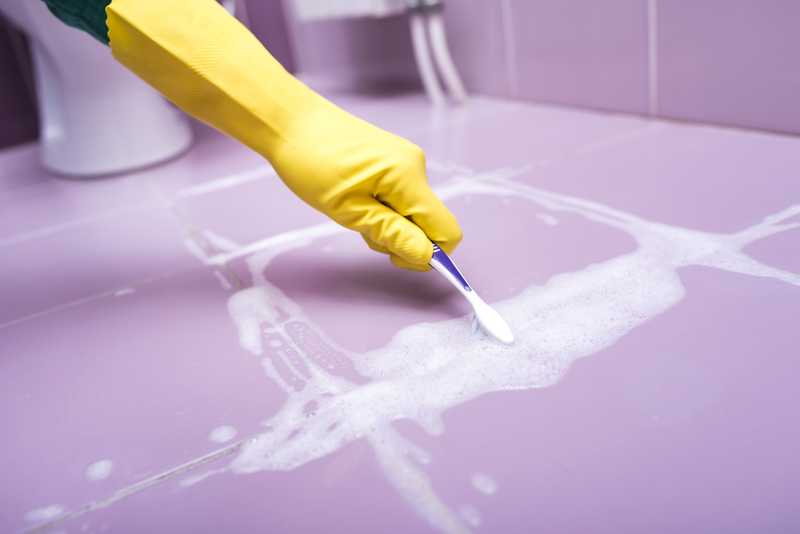Effective Upholstery Cleaning Techniques
Posted on 25/10/2024
Maintaining clean upholstery is essential not only for aesthetic appeal but also for prolonging the life of your furniture. Dust, dirt, and stains are inevitable over time, but with the right techniques and tools, you can keep your upholstery looking fresh and inviting. This comprehensive guide will walk you through effective upholstery cleaning techniques, pros and cons, tips, takeaways, and a conclusion.
Understanding Your Upholstery Fabric
Before diving into the cleaning process, it's crucial to understand the type of fabric you're dealing with. Upholstery fabrics can range from natural fibers like cotton and linen to synthetic fibers like polyester. Each type of fabric has its own cleaning requirements:
Natural Fibers: Generally more delicate and may require gentler cleaning methods.
Synthetic Fibers: Often more durable and can handle more vigorous cleaning.
Consult the manufacturer's label or guide to understand the best cleaning practices for your specific upholstery.

Essential Upholstery Cleaning Tools
To effectively clean your upholstery, you'll need a few essential tools:
Vacuum Cleaner: A vacuum with attachments like a brush or crevice tool is ideal for removing loose dirt and debris.
Soft Bristle Brush: Useful for scrubbing and lifting embedded dirt.
Microfiber Cloths: Perfect for wiping down surfaces without causing damage.
Spray Bottles: For applying cleaning solutions evenly.
Bucket for Soapy Water: Required for spot cleaning and scrubbing.
Spot Cleaning Techniques
Accidents happen, and when they do, it's important to act fast. Here are some spot cleaning techniques for the most common stains:
Blot, Don't Rub: Always blot the stain with a clean cloth to absorb as much liquid as possible. Rubbing can push the stain deeper into the fabric.
Use a Mild Cleaning Solution: Mix a few drops of mild dish soap with water. Apply the solution to the stain using a clean cloth and gently blot the area.
Red Wine and Coffee Stains: Sprinkle baking soda on the stain and let it sit for a few minutes before blotting it away with a damp cloth.
Deep Cleaning Techniques
For deep cleaning, you'll need to be a bit more thorough:
Vacuum Thoroughly: Begin by vacuuming the upholstery to remove loose dirt and debris.
Use a Steam Cleaner: If your fabric can handle it, a steam cleaner is an excellent tool for deep cleaning.
Shampoo the Upholstery: Apply an upholstery-specific shampoo, following the manufacturer's instructions. Use a soft brush to scrub the fabric gently.
Rinse and Blot: Rinse the fabric with clean water and blot it dry with a microfiber cloth.
Natural Cleaning Solutions
If you prefer natural cleaning methods, here are some safe and effective options:
Baking Soda: Sprinkle baking soda on the fabric and let it sit for 20 minutes before vacuuming.
White Vinegar Solution: Mix equal parts of white vinegar and water. Spray on the upholstery and wipe with a clean cloth.
Hydrogen Peroxide: Useful for removing tough stains; however, test it on a hidden area first to ensure it doesn't bleach the fabric.
Pros and Cons of DIY Upholstery Cleaning
Pros:
- Cost-effective
- Can be done at your convenience
- Eco-friendly options available
Cons:
- Time-consuming
- Risk of damaging the fabric if not done correctly
- May not be as thorough as professional cleaning
Tips for Maintaining Clean Upholstery
Vacuum Regularly: Weekly vacuuming can keep your upholstery looking fresh.
Treat Stains Immediately: Don't wait for stains to set in; treat them as soon as they occur.
Rotate Cushions: Rotating cushions can help them wear evenly.
Use Slipcovers: Protect your upholstery with washable slipcovers.

Takeaways
Understand your fabric type before cleaning.
Use the right tools for effective cleaning.
Act quickly on stains to prevent them from setting.
Consider natural cleaning solutions as safe alternatives.
Conclusion
Effective upholstery cleaning is a combination of understanding your fabric, using the right tools, and applying the right techniques. Whether you opt for DIY methods or seek professional help, maintaining your upholstery clean will not only enhance the look of your furniture but also extend its lifespan. By following these guidelines and tips, you can enjoy fresh, clean, and inviting upholstery for years to come.





